The Ultimate Guide to Breeding Meat Rabbits for Sustainability
Raising meat rabbits is making a comeback. Here’s how to sustainably start raising meat rabbits and breeding them on your own homestead.
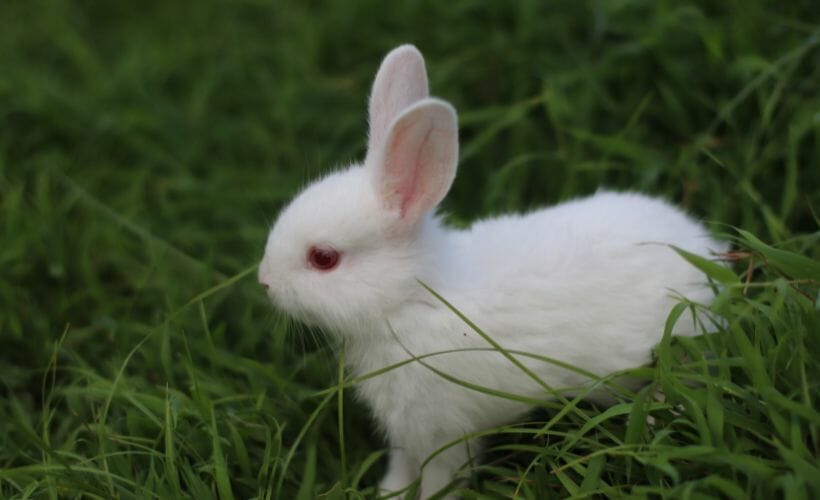
If you want to breed rabbits for a sustainable meat supply, there are a few things to take into consideration before beginning a rabbitry. Rabbit meat is popular among homesteaders because rabbits are easy to raise, breed easily, and give birth in less time than other traditional homestead livestock like sheep, goats, pigs, and cows. Rabbits also produce lean, healthy meat that’s low in fat and is a culinary delicacy in many countries around the globe. Meat production is just one reason why rabbits on the homestead are a great idea.
Best of all, for non-traditional and suburban homesteaders, most city ordinances allow you to keep rabbits, so in areas where chickens and other livestock are not allowed, meat rabbits make a great alternative. Unlike roosters, rabbits don’t crow, don’t smell, and don’t free range (unless you build a special tractor), so your neighbors are unlikely to object to you raising rabbits in your backyard.
Choosing Meat Rabbit Breeding Stock
Before you begin breeding, you will need to first choose parent stock. On our homestead, we breed New Zealand and Rex crosses, mostly because of their large size and docile natures. We do have a wild rabbit that has been tamed (we acquired all of our rabbits from someone who did not want them anymore), but she is difficult to pick up and still has a wild streak. She is also quite small. However, she is advantageous to our breeding program because, well, she likes to breed.
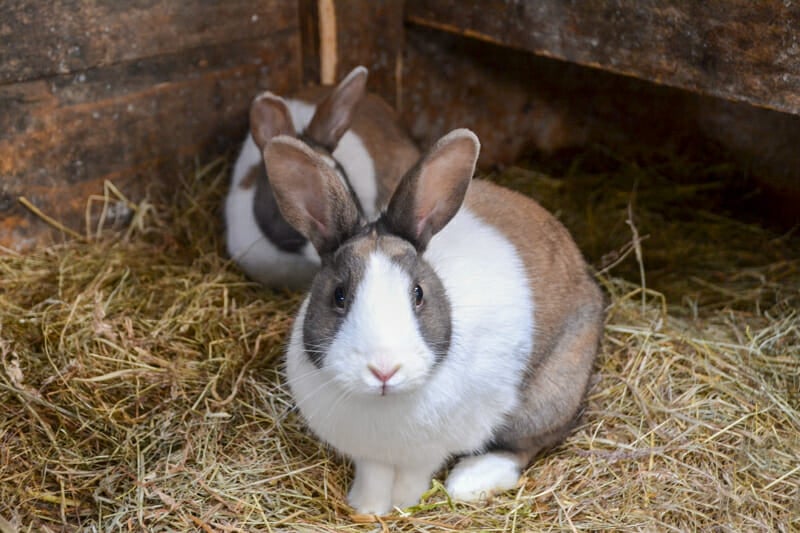
For first-time meat rabbit breeders, I recommend going with a breed that is more domesticated, because they will be easier to handle and you will have a better experience.
When looking for parent stock, look for rabbits that are robust and large and have healthy-looking coats. Although rabbits can live 10 years or more, choose a breeding stock that’s on the younger side and look for a reputable breeder in your area for your purchases. If they will not let you see photos of the rabbits before purchasing them, avoid that breeder. Some breeders will not allow outside parties to view the area where rabbits are housed; this is another red flag.
If you are setting out on the adventure of purchasing breeding stock, you’ll want to know all the right things to look for.
Popular Large-Breed Rabbits
Some meat rabbit breeds to consider are New Zealand (9–12 lbs), Rex rabbits (8–9 lbs), Californians (8–10 lbs), Chinchillas (9–11 lbs; also a heritage breed), and Flemish Giants (15–22 lbs). These are large-breed rabbits, and since these breeds don’t eat much more than smaller breeds but use their feed more efficiently, they’re a better option in my book. Angoras are a dual-purpose rabbit you may also want to consider.
Heritage Breed Meat Rabbit Options
Heritage rabbit breeds found on the Livestock Conservancy are breeds that are either critical, threatened, watched, recovering, or being studied. These breeds were once commonly found in many American homes as a sustainable meat source prior to the opening of supermarkets. Some heritage breeds to consider include Americans (10–12 lbs), Harlequins (7-9 lbs), and Silver Foxes (10-12 lbs).
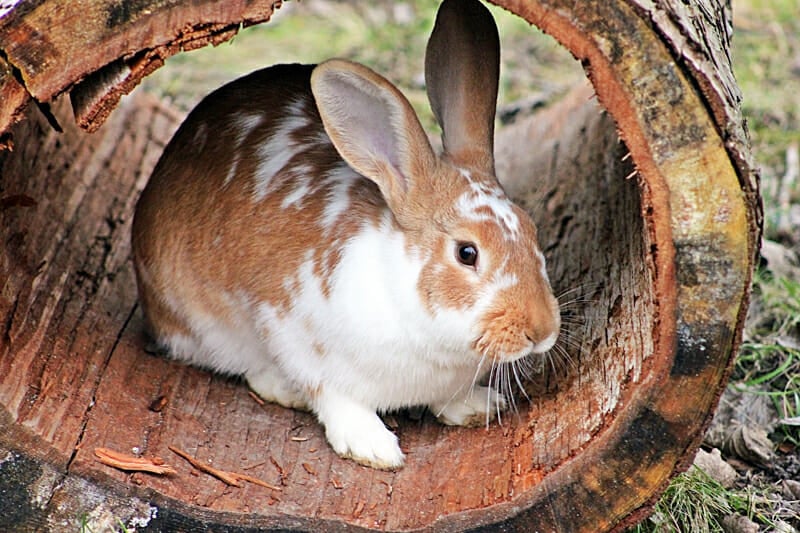
The Livestock Conservancy has a really handy chart to help you pick the right heritage breed(s) of rabbits for your homestead.
We specifically choose to breed crosses because I believe cross-breeding yields very healthy animals, and it’s our goal to have a self-sustaining herd of meat rabbits.
How to Arrange a Breeding Schedule
Rabbits are able to breed at around 7 months of age, and we also prefer to wait until that age to harvest them because they are nearly fully grown.
We breed one female each month; that way, we aren’t overwhelmed with rabbits, but since they have a 30-day gestational cycle, we still have plenty of meat available. Rabbits can have large litters, anywhere from 1 to 14 offspring, so with such a short gestational cycle, it’s easy to get overwhelmed.
For now, our plan is to keep our original parent stock and to use the offspring for meat, unless one or more seems like a keeper or if we lose a parent rabbit to old age, disease, predators, or the like. With 5 females and 4 males, we will be able to breed for quite a while!
We keep our males and females in separate cages; most people who keep rabbits will keep one rabbit in one cage; however, I prefer to do it differently. I like to keep at least 2 rabbits in a cage, and of course, we keep them in cages that are large enough to comfortably house them. Rabbits are herd animals and don’t live solitary lives. Since our goal is to give them happy lives before harvesting them, I want them to be able to interact with other rabbits.
How to Breed Your Rabbits
When you hear about things breeding or multiplying en masse, rabbits are often the expression used. I don’t want to discourage you, but breeding isn’t quite as easy as you may believe heading into this.
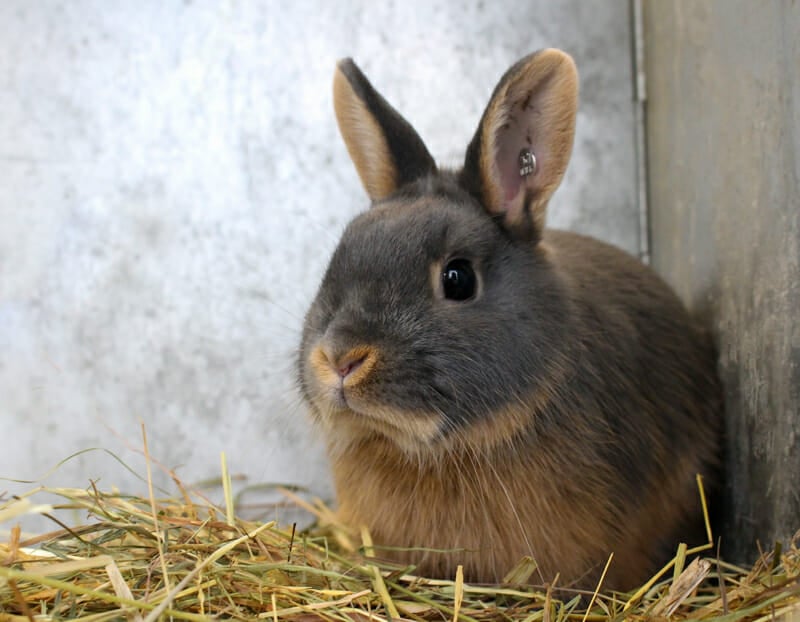
When actually breeding meat rabbits, the doe should be put in the buck’s cage, not the other way around. Females can be really territorial and may attack the male instead of breeding.
The two rabbits will probably run around in circles for a bit. If the female is open to being bred, she will lift up her tail, the male will mount her, and then he will fall off onto his side. It’s equal parts pitiful and hilarious, if I’m being honest.
Once the buck has bred the doe twice, she is removed and put back in her cage. It’s a good idea to bring the doe back to the buck in about ten hours, as the act of breeding stimulates rabbits to ovulate, so you will increase your chances of a decent-sized litter if there is a second breeding.
When the bred female is close to giving birth to her kits, any buddies in her cage are removed until the offspring are bigger. The doe will feed her litter once or twice each day for about 2 to 5 minutes at each feeding. They continue nursing until they are weaned at 6 to 8 weeks of age.
Reasons why your rabbits may not breed
If you’ve paired up your rabbits and they don’t seem to be “doing the deed,” there may be a couple of reasons why.
They’re Too Fat or Thin
Research has shown the most common cause of breeding problems occurs because does and bucks are underweight or overweight for their breed’s recommended weight. Underweight rabbits may be physically incapable of breeding successfully. Overweight rabbits may not show any interest in mating and can have a hard time becoming pregnant if mating does occur. Feeding rabbits appropriately is key.
Establish a “target” weight prior to breeding according to the specific breed standards of your rabbit for the greatest success. Adjust the feed intake of your rabbit to maintain an ideal weight.
Pelleted commercial feeds provide complete nutritional needs at the time of manufacture, but vitamins A and E are vulnerable to poor or prolonged storage. Both are needed for the willingness and ability to breed. Instead of increasing the pellets, I suggest feeding about a tablespoon of black oil sunflower seeds for Vitamin E and a good handful of dark leafy greens (dandelions, plantain, raspberry, and kale) for Vitamin A. Vegetables should be given in moderation to provide additional nutrients. Also, make sure your rabbit has a constant supply of hay available to it for the necessary fiber and protein.
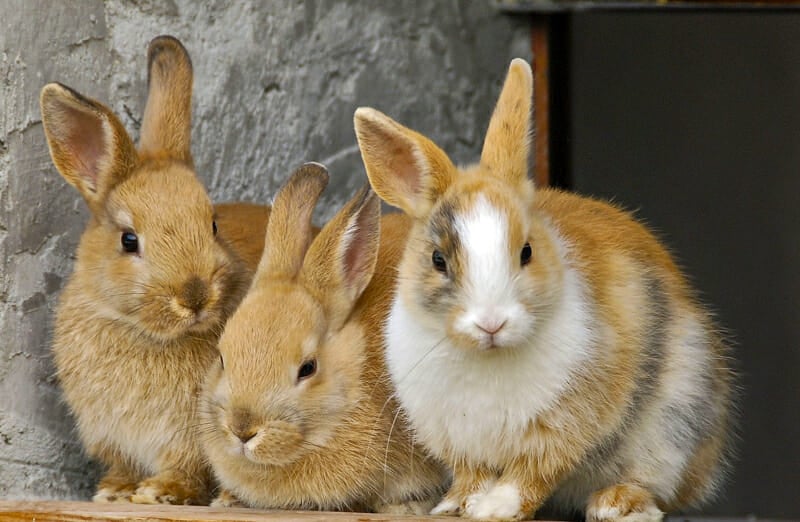
Making sure your meat rabbits stay at a healthy weight is very important for their health and growth. For detailed information on what your rabbits should eat, read our post on What to Feed a Rabbit. It has all the important information you need to feed your rabbits in a healthy way.
It’s Too Hot or Cold
Environmental temperatures can affect the reproductive performance of bucks. Temperatures above 85°F can cause heat-induced sterility. Keep bucks in a cool area when used for breeding purposes. The bucks may remain sterile for up to 3 months.
I find that both bucks and does are more reluctant to breed in the high heat of summer (July, August, and September) in northern climates and late spring through early fall in southern climates. You may get better results when breeding first thing in the morning or last thing in the evening, in really hot weather.
There Isn’t Enough Light
It has been found that giving the rabbits 12 to 14 hours of light will help a lot. This will trigger the pineal gland, which may cause the rabbit to think it’s spring and time to reproduce. For best results, keep the amount of light constant for 14 hours each day to maintain constant breeding throughout the year. A simple plug-timer will do the trick.
Frequently Asked Questions on How to Breed Meat Rabbits
Breeding meat rabbits is a great way to have a continual supply of fresh, lean meat, and there is nothing more rewarding than producing your own meat.
For more information on breeding meat rabbits, Storey’s Guide to Raising Rabbits is practically the bible on the topic. I also really got a lot of value from Raising Rabbits for Meat by Eric and Callene Rapp. If you’d prefer pasture raising instead of the cage method, Raising Pastured Rabbits for Meat focuses on small-scale and sustainable pasture practices.
If you’ve found value in this blog post and enjoyed reading it, why not share it with your Pinterest community? Pin the image below and spread the love!
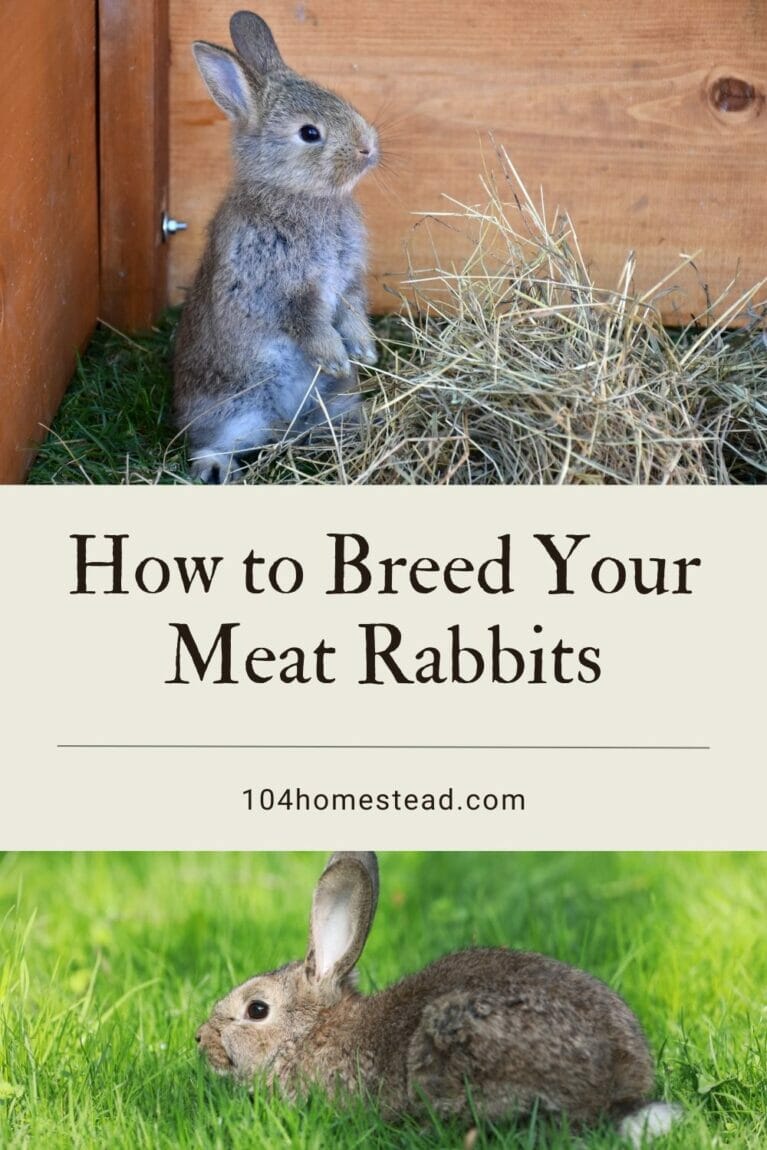
Breeding meat rabbits on your homestead can be fun and give you a steady supply of lean, healthy meat. The joy of taking care of and watching your rabbitry grow is unmatched, but it takes time and careful management. You can build a successful rabbit breeding program that helps your homestead become self-sufficient if you are patient and give your rabbits the care they need. Do not forget that good breeding starts with picking healthy stock and continues with taking good care of the breeding process, the does and their kits.
Have you considered adding meat rabbits to your homestead? What’s your biggest question or concern about starting with rabbit breeding?

This is a nice (quiet) meat project for a backyard homestead. Thank you for the information.
I started my rabbitry with mutts but question about the growth. The doe was a Satin with some rex I think and the Buck was a New Zealand mixed with something else.
At 8 weeks old the whole litter weighs under 4 pounds? They are free feed pellets and hay and active. Are those parents just slower growers or will I possibly see a huge increase if I wait to 10 weeks?
Great post thanks!
Hey there, I’m working on starting a herd for raising meat. I have two bucks, a Silver Fox and a Rex. I have read that these two breed well for meat, but I was wondering which would do better as a sire…is a large buck and smaller doe better, or a small buck and large doe? My Silver Fox is pedigreed, so I would prefer using him with Rex does. I’ve basically been keeping these for fertilizer, and I’m ready now to expand my husbandry practices. They are both 1 1/2 years old. Thank you for any suggestions or advice!
It’s always best practice with any animal breeding to have a large female to small male, otherwise the offspring may end up too large for the female to birth.
Bingo! I thought that may be the case for rabbits too. Thanks for your help, and I’m glad I found your website!
Female Rabbits are very territorial and should never have a Buck put into her cage. Always bring the doe to the buck!
We are just starting off our experience and we absolutely love all the information you post, we started a blog so we can write all about the ups and downs. We are so happy to have the three rabbits and have the incubator for our soon to arrive quail eggs, they are Texas whites, my mom says they are wonderful for the meat. Our laying chicks are due to arrive April 4 th. I’m so thrilled. We retired this year and we are making it on one SS check until next year. So after some consideration we decided that being more self sufficient would really benefit us! Thanks to you for all your information.
You are so welcome Victoria. Welcome!
Glad someone pointed out that you don’t bring the male to the female
***NEVER put the male in the female’s cage! You are lucky your female’s haven’t tried to kill the male. Maybe because you have females who share cages? IDK. Put her in with the male, let him do his thing, take him out, wait a few minutes, put him in again, repeat that 3x, then remove the female back to her cage.
I was wondering about that. When I bred rabbits for 4-H as a kid we never put the male in the females cage, I was told the female would attack him because females are very territorial. We got some Californians last week and I was refreshing myself on breeding them. I think I will read some more and see what other people’s opinions are.
Yeah this goes against everything I have ever heard. Always female to male as the females can and will tear into anyone who comes into their territory.
Is there a difference that makes a rabbit a “meat” rabbit versus something other than a meat rabbit? Other than the obvious, your eating one versus keeping it as a pet?
Any rabbit could be a meat rabbit. Some breeds are chosen for their rate of growth, meat to bone ratio, etc.
Thanks Jessica!
We got our first set of rabbits from Daniel Salatin at Polyface (we live an hour from their farm),and they are a mix of new Zealand and California. We like meat rabbits because they are inexpensive to raise, easy to handle, low maintenance, take up little space, easy to process, and they taste great in a variety of dishes. I am working on growing more fodder for them, so we can purchase less pellets. Any suggestions for resources?
This is a great article about fodder for livestock (rabbits included). http://www.motherearthnews.com/homesteading-and-livestock/sprouted-fodder.aspx I don’t have a lot of experience with it myself. I’ve sprouted, but that’s about it.
I’m really looking forward to having rabbits on our homestead. We were gifted a hutch from my cousins and can’t wait for it to get here and to start our bunny adventure. We want to do both meat rabbits and fiber ones!
I think you’ll be really pleased with them.
My son raised rabbits on our farm in the early stages for meat, he chose the Californian and New Zealand. They were raised on ground with a mobile set up, was pretty neat. Processing was a breeze, must faster than chicken. The hardest part is the cull because they can be difficult to keep from moving. He figured it out though and the experience was positive. I still prefer the quail for a small breed self reliant animal.
My dad use to tell me stories about how he was a kid and my grandparents would do this. They were poor and they basically had to raise and grow their own food. I would imagine in a “have to” situation I could do it, but I am not sure I could raise rabbits just for food.
Chickens on the other hand, I could do it in a heartbeat.
I working hard to mentally separate this from killing a bunny but we’re nearly there. I’ve killed a chicken before but my husband is the one in charge of harvesting the animals and he’s seeing the benefits of raising meat rabbits in a more favorable light. We’ll probably always do chickens and turkeys, too, but they’re kind of a pain in the butt to raise compared to a rabbit.
Thanks for the great article!
It certainly isn’t easy. I’ve done the quail, but I send the chickens away. For me, it’s worth $5 a bird to not have to do the deed. Plus, they come back cleaned, cut, and vacuum wrapped.